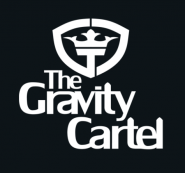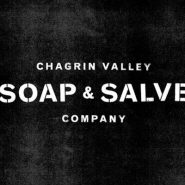Key Attributes for Effective Purchasing
Versa Cloud ERP can help you do your purchasing on the go. Check inventory while at a vendor, submit a PO on the spot. We have tools as well to help you keep your inventory stocked such as minimum inventory levels, and our PO planner. Here, we will go over the process of creating a PO, and receiving it into your inventory.
Product attributes for Purchasing
To create new products, we’ll create a purchase order for the product, and then we will receive the inventory into the system. Here are the steps:
- Click on the product menu,
- Click on the new product. We’ll use a golf driver as an example. It’s typical to enter part numbers for your products, so you can add that as well.
- We need to choose the inventory asset account to use for this inventory item. Versa Cloud has the ability to use multiple units. We also have the ability to track serialized inventory, and also track lotted inventory.

Serialized inventory means that each unit you buy and sell has a serial number. You will need to enter that into the system so the system can know who you bought the inventory from and then who you sold the inventory to.
Lotted inventory is similar, but instead of individual units having a serial number, you have a lot number that will apply to multiple units of inventory.
Product Attributes
In the shipping module, we have optional weight and dimension fields for your packages. It also have some additional fields you can enter, like bin location. These custom fields can be created by you.
Trading Information
This is for cases where you might buy and sell the product in different names.

For example:
Let’s say, you have a relationship with Costco and Home Depot. When you sell the product to Home Depot, the product has one name, but when you sell to Costco, it has a different name, too. You can enter that as different trading names. To keep it simple, we will use the same name as the stocking description.
Product Categories for Purchasing
We can put a product into different categories. A category is something that you can set yourself. You can create as many categories as you’d like in the system. You can also enter a description, as well as a long description of the product if you wish. You can use the formatting option to format the detailed description of the product.
I will create a product. In this case, I already used the part number. The system will keep you from duplicating part numbers. So, I’m just going to use a different part number. I’ve created a product. Now, after the product is created, there are some additional things you can enter. I can upload an image so I know what the product looks like. All you need to do is just browse to a file with the image on your computer and then you will upload that image to the application. The image will be stored with the product. If I refresh this screen, you’ll be able to see the image in the top right corner.

Multiple Suppliers and Purchasing
Then there are some additional attributes we can put on the product. We can specify our reorder points. Maybe we keep a minimum level of 10 units in the system, and then we also buy 20 units at a time. We can also set up approved suppliers for this product. If you buy from multiple suppliers for the same inventory, then you can enter them here. We buy this from ABC Corp, and they have a different part number. This is the primary supplier that we buy this from. So we order 20 units at the time, and the lead time is five days and it costs us 150 dollars.
Multiple Currencies
Versa Cloud has the ability to track multiple currencies, so you can buy and sell in any currencies that you like. I created an approved supplier. You can see them at the bottom. Then, we can also set up selling prices by clicking on this button, “set price policies”. It is common that you may have the product, and then you sell to different customers at different price levels. So in this system, we have set up a dimension, which is a feature of Versa Cloud, it is called a pricing type. This pricing type is something that you can specify yourself, you can create as many price levels as you like. In my example, I have a warehouse price and dropship pricing, but you can create as many as you’d like. The idea here is that you can specify different prices for different levels. So I am going to say one is the warehouse pricing, and each unit is 250 dollars, and then there’s a drop-ship price, maybe it’s a bit more expensive. It’s 280.

Individual Customer Price
We also allow you to put the price for each customer if you like. So you can just put the customer name here, and then specify this customer will get a different price. Maybe they are a special customer, they’ve got a price, maybe the best price you can give. But typically, people put customers into different pricing levels so this way, they can better control and update the prices.
Creating a Purchase Order
Now we have set up both the supplier’s price and selling price. And then now, we’re going to create a purchase order. So go to the orders menu, click on New PO. In this case, I know exactly the quantity I need to purchase for my inventory items. We also have a separate tool called the PO planner. Under orders Menu, PO planner. That will allow you to look at the inventory in the system, look at your sales order situation, and look at outstanding purchase orders and work orders, and then recommend the quantities you need to order. This will be shown in more detail later in the video.

Now we’re going to choose the supplier, we’re going to buy from ABC Corp. There is some header information here, we can enter where the inventory should be sent to. So in my system, I have multiple warehouses. A warehouse in Versa Cloud is called a facility. So I’m going to say that this will be shipped to our main facility. You can also put an internal reference here if you like. This is for your own information. Now we can create this purchase order. After the purchase order is created, I can put the product onto the PO. I just need to type in a few letters about my product, either the description or the part number, to bring up the product list. The system also displays the product picture. For this golf driver, I’m paying my supplier 150 dollars for it.
Additional Fields
We have some additional fields here for you to enter. You can enter the delivery date and ship date of this item if you know it when you enter the purchase order. If you don’t know it, then you can enter them later. We also have Note A and Note B, as additional note fields for you to use to communicate whatever information you want to the supplier. This form itself is customizable, so you can choose to hide the fields that you don’t use.
Handling Taxes
We can also handle taxes. Taxes can be set up beforehand, so that is auto-populated. For now, we’re going to say that this item is not subject to tax. I’m going to create the items. Just to demonstrate, I’m going to put another product onto this PO. I’m going to buy two units at 300 dollars. Okay, now I have created a purchase order with two lines. My total is 750 dollars.

For purchase orders, if you want, you can print them. The printed version is customizable as well. You can customize the layout, customize the colors, the font size etc. Purchase orders can also be emailed. When you email the purchase order, the order itself, will be attached as a PDF. After this, it will send the purchase order to your supplier. For the inventory to arrive at your warehouse, the receiving clerk will need to come into Versa Cloud and then do the receipt of the order.
Receiving the Order
So to receive the order, we need to go to logistics, new receipts. We then choose the name of the supplier You may filter by the order number. We can see the two products that are on the purchase order here. First the golf drivers, and second turnout. If what you received are the full quantities that are on the purchase order, you can just leave quantity that is populated by default. If somehow, you got a partial shipment, you can enter the actual quantities received. The system will be able to track that. We’ll just say we received all, everything was shipped in full, and post the receipt.

Inventory
After this, we have some inventory in the system. We can confirm this by looking up the product. Click on products menu, product search. We can look up the driver. We see that we have one unit on hand and it costs 150 dollars. To complete the purchasing process, we also need to pay for the new inventory. To do this we’ll go to the bills menu, new bill. We’ll choose the supplier that we bought this from and enter the bill details
Inventory Shortcut
Now, we have a shortcut here, where instead of typing in everything that’s on this invoice from the supplier, you can actually create a bill from the shipment received record that we just created. So we’re clicking on choose to link all lines for PO3011. Then, I’m going to choose this line and create line items. What this will do is it will bring the details based on the shipment receipts that were posted to the bill. So this way, if we have a really long PO, the entire PO can be brought into the bill in one click. So the bill is posted, 750 dollars. We can choose to post the bill if this is going to be paid later. If you want to record payment right away you can do a post and pay, and then the bill and the payment will be posted at the same time. So for now, we’re just going to post the bill and pay it later.

So there we have it, So to recap, we created some products. We created a purchase order for those products. Then we received the inventory, and then we created a bill to pay for the new inventory we just received.
There is so much more to Versa Cloud ERP that we would be happy to show you. Sign up for a personal product tour today to see just what we can do to help your business grow!
Click here to get your FREE Personalized Product Tour.
https://www.versaclouderp.com/versa-cloud-erp-tour


